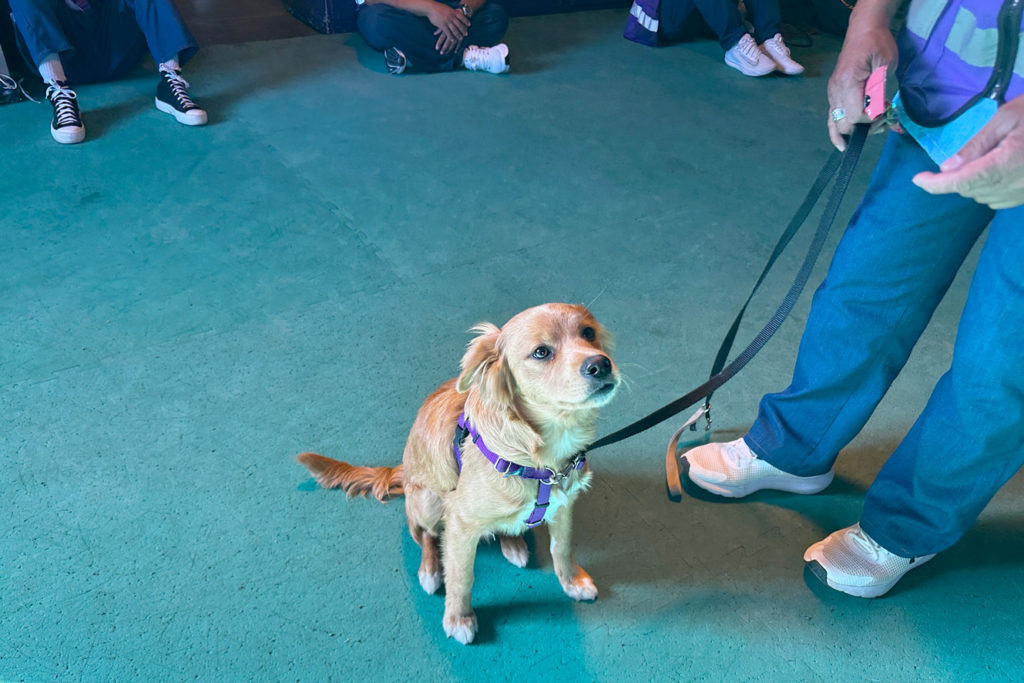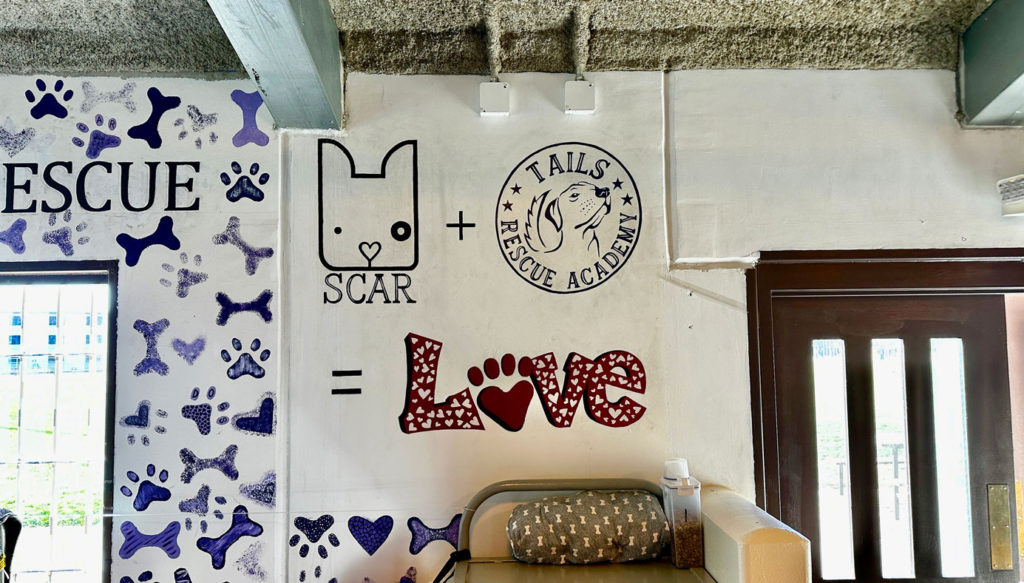Driving into the Correctional Training Facility at Soledad and you are reminded of how a secure institution can be. Acres of barren land, no trees, double high-wire fences, guard towers. And that’s how it should be, we know that. But head over to the north side (get your pre-accepted pass from the guard stand by the roses no less), and you will find a different type of environment.
Beyond the double-locking gates and bars and seas of blue on blue (inmate standard wear), there has evolved a most unique situation. An environment where there are dogs living with inmates. Several dogs. Unwanted dogs that were mostly on the euthanasia list at the local animal shelter and, as a nonprofit animal rescue, SCAR (South County Animal Rescue) was able to pull or provide the dogs for the inmate dog training program, TAILS K9 Rescue Academy (located on Facility A), and ultimately save their lives. There’s some magic happening over there in the TAILS dorm. One life saving another, which then saves another.
I was escorted to the TAILS’ dorm (the acronym is “Transforming Animals’ and Individuals’ Lives”) by one of the main cheerleaders and founders of the TAILS program, Correctional Counselor I (CCI) Shannon Dunaven. Dunaven and Jana Summers (now retired CCI) came together and created the TAILS K9 Rescue Academy Program with the main goal of saving dogs and giving them a second chance at life.
As the co-founder of SCAR — TAILS’ partner in the dog training program — I had met the Counselors before at our initial planning meetings and fundraising events for the programs outside of the facility; but this was my first opportunity to view the dorm, see the habitat for the dogs and witness the trainers and their students’ training efforts in action. In just over a year of the partnership between SCAR and TAILS, 36 pups — including the current students — have been through the program and, mostly, graduated.

These are dogs that would likely not have made it out of the overpopulated animal shelter alive — no hopers, less than, untrainable, apparently — just like their trainers. There are 23 handler/trainers and nine dogs onsite at this current time. It’s a job share program with primary, secondary and tertiary team members. “This teaches the inmate trainers the essence of teamwork and patience with each other, as well as the animal in training,” said Dunaven.
You walk into the dorm of TAILS (part of an enormous barrack construction) and immediately in your viewshed on the walls and bunks, there are purple paws everywhere. (Purple is their color.) On the walls, cheery murals of the SCAR and TAILS logos were beautifully painted by many of the TAILS’ participants, who have quite the talent. This end of the large dorm room is for the TAILS trainers and their animals only. In case you forget, there are red lines marked on the floor. The other half of the dorm is for the general inmate population, who I noticed peeking over at the dog action once in a while, but very respectfully. You could hear their lives going on at the other end of the dorm — showers, televisions and the sounds and smells of food being cooked.
The door from the TAILS dorm opens wide to the general recreation yard and, whenever the dogs need to go out to relieve themselves, the trainers can take them out there. “How do you manage all the people in the yard wanting to pet the dogs?” I asked. There were a lot of trainers wanting to respond to this as we sat in a large circle in the training corner of the dorm. The first two weeks are the acclimatization period for the dogs, I was told. The guys on the yard know if the dogs are new to the program and, often, the dogs will tell them when they don’t want to be approached. Other than that, the guys need to approach in a respectful manner and ask if they can pet the animal. They ask for permission and very often that is granted. They went on to explain that the dogs make a big impact on the yard.

Batz came running up to meet me — a gorgeous, sleek pit bull mix of a youngster. “He was hours from euthanization, when SCAR pulled him for our program,” said Dunaven. Monica, the dog manager with SCAR, works for the County and has a hotline for pups that are in trouble at the County shelter, also, notably, a hotline to Dunaven now the program is in its second year.
Lucky old Batz has already been adopted and will soon be going to a family where the lady has panic attacks. You could see the intuition and intelligence in Batz’s manners and responses to his trainer, Denis. Only 6 months old, he seemed to have an old soul, and I could clearly see how much help he would be able to give an individual who struggles with daily life. And he is one of the lucky ones. Batz’s trainer Denis is a lead educator and has been training dogs for seven years. “Dog training has taught me patience,” he said. “It is better to be needed than to be impatient. I like to take on the difficult dogs. They teach me.”
JP is a former inmate and dog trainer. These days he comes back into the facility about once a week to check on the inmate trainers and dogs and make corrections where needed, since he has a regular job on the outside. He gives his former co-trainers the inspiration and skill set they need to keep improving. Dunaven noted that the inmate trainers learn compassion and empathy through their dog-training duties, and this can be key to changing their own lives. Some had never experienced those emotions in their difficult past lives, and it can undoubtedly be hard to learn the skills in an institutional setting.
“This dog-training program can be a fast track to parole,” explained Dunaven. “The trainers are forced to face issues they hadn’t addressed before. The dogs help them open up. To be in the program in the first place they cannot have got into any trouble here at the facility and are seriously vetted; but we see how these trainers are all steadily improving along with their dogs. I feel like I’m helping both the dogs and the people in here. We are setting them up for success in life. Dogs and people.”
“TAILS in Soledad” will continue next week.














